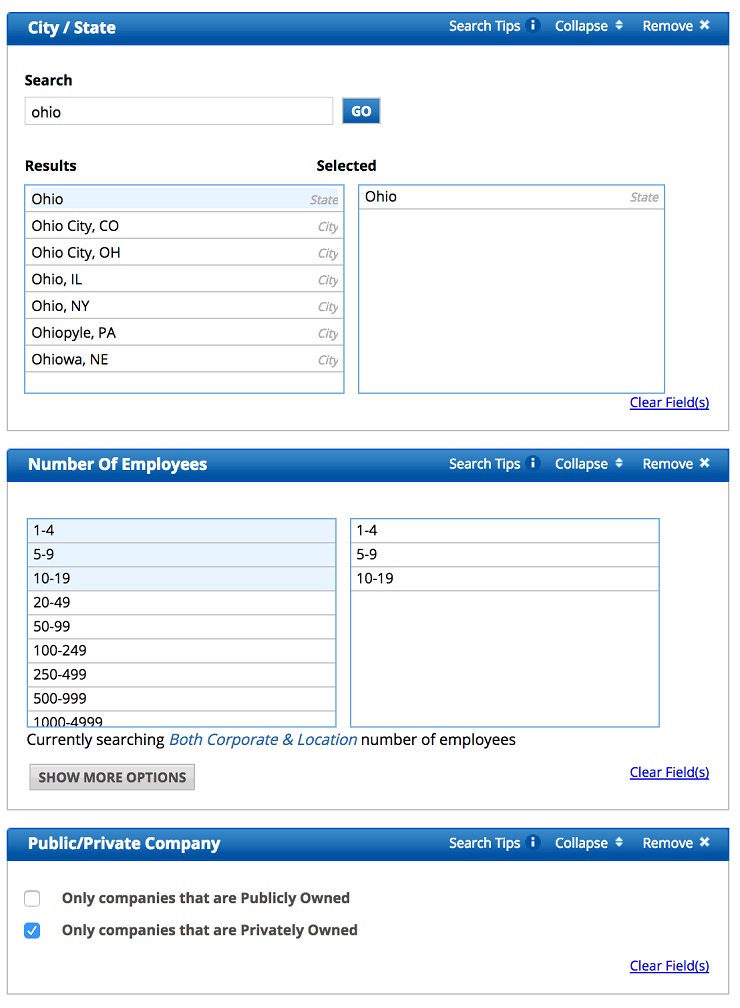I bet you’ve had a few moments like this. You wake up in the middle of the night, or have to pull over the car and stop what you’re doing, because a brilliant idea has hit you. Every entrepreneur out there gets hit with inspiration throughout the day and this is often what sparks your next great idea.
Then you fall in love with your next “big idea.” You tell all of your friends, family members, and even your dog about it, and you passionately pursue this idea with everything you’ve got. You spend every waking moment, 24/7, and dedicate yourself to this idea for weeks, months, and maybe even years.
Then, one day, you wake up and realize that you are still eating ramen noodles, washing clothes at your parents’ house, and lighting candles from the dollar store to save electricity. Sound familiar? I’ve experienced precisely this disappointment myself over the past 20 years of my entrepreneurial journey, and as a result, I’ve developed a pretty solid grasp of what is and isn’t a good business idea. Or at least some reliable ways to figure it out.
Rather than struggling with an idea for a long time, only to realize that it’s not something you should have pursued in the first place, just use this simple formula that I’ve put together. I’ve used years of trial and error (lots and lots of error) to whittle down this process that will help you decide if you should actually pursue that next big idea or just let it stay in your notebook.
The following is a deep dive that will allow you to be sufficiently thorough in your validation, but it uses pretty basic concepts. I’ve also created an accompanying sample worksheet so you can follow along, and even make a copy to use yourself.
Are All Your Ideas Good Ones?
I wish I could say that every single idea I have is the next million- or billion-dollar idea, but honestly, that couldn’t be further from the truth. Most of my ideas stink.
Early in my entrepreneurial career, at age 16, I thought that everything I dreamed up had merit as a real business idea. As I reach nearly two decades in the entrepreneurial world, I’ve realized that of the 100 ideas I come up with over the course of any given year, I’m very lucky if two of them are actually any good.
Early in our journeys as entrepreneurs, it’s easy to think that we need to fixate on one idea and make it work, but I believe the opposite is actually true.
Since only a few ideas are worth pursuing, it’s more important for us to discard all the bad ideas so we can uncover the ones worth working on. Considering the time and money wasted on bad ideas, one of the most important entrepreneurial skills you can hone is identifying and discarding them, and moving on.
I’ve personally seen inexperienced entrepreneurs invest years and $250,000+ on something that should never have been started in the first place. You don’t have to make this mistake. I’m going to show you exactly how I validate my own ideas and the ideas that my consulting clients bring to me.
What’s in It for You?
When you first begin, it’s easy to think about how exciting your new idea is. Maybe it’s a new piece of software, a service you want to start or a product that you want to launch. All of these can be great things to pursue, but there is a fundamental decision you must make first.
You need to ask yourself: How much do I want to earn personally if I start up this business?
That question is the first and most important one to answer when you validate your new business idea. The reason is that, even if you go through some validation exercises, you could very well launch something that could technically “work” as a business, but is simply not worth the hassle.
Imagine if you “successfully” launch a new piece of software, but in the end it doesn’t pay you enough so that you can afford the lifestyle you want for yourself and your family. Is that really success?
That is why I always start with the question: How much money do I want to make?
I’ve created a useful worksheet that I use for this process, and you can get your own copy here.
I believe that at a minimum you should be targeting $50,000 in personal income in the first year of your startup before scaling up from there.
You may need to adjust this up or down depending on where you live, but $50,000 is the minimum that you should make, in my opinion, in the United States.
Once you determine your personal income goals for the first three years, realize that these are just personal income goals as opposed to a business revenue target. Generally speaking, total revenue is around three times higher than your income. This assumes that you follow the recommended formula for planning owner pay (assuming 20% of revenue) and business profit (15% of revenue).
I use a simple formula based on the template that Mike Michalowicz shares in his book, Profit First. I highly recommend that you read this book, regardless if you have an existing business or plan to start a new one.
Mike shares in his book that for every sale you make, it should be broken down in the following manner:
If you use this simple formula, you’ll start off on a rock solid financial foundation that will serve you well for years. Don’t overlook this important step!
Size Up Your Idea
You may have noticed that so far I haven’t mentioned any specific business ideas, and I did that intentionally.
If you don’t have a clear goal for your personal income level for the first three years of your business, then you shouldn’t sift through any of the business ideas you have. There’s no point in being “successful” and broke, because you’ll burn out very quickly.
Now that you have your income goals in hand, it’s time to choose an idea. To make this clear and applicable, I’m using a fictitious company idea for this exercise. Follow along and compare your idea as we go.
It’s okay to realize midway through this exercise that your idea won’t work. That’s a win in itself. I’d prefer that you throw out a bad idea now and move on to one with more potential.
Don’t be afraid to go through this validation exercise over and over until you make the business model work properly. Don’t cheat on the steps or the numbers. You can’t afford to trick yourself into thinking something will work when it doesn’t!
Step 1: Choose Your Idea
This validation process works for any business type.
For my example idea, I want to start a fictitious social media management company called “Social Managers Plus.” This post isn’t about choosing great names or branding, but you can learn more about that in Foundr Podcast Episode 109 with Alex Bogusky. For now, you can enjoy my awesome company name that I just made up. 😉
The basic idea for Social Managers Plus is:
- Each month, we curate images and links while writing status updates for clients
- Clients approve the status updates
- We schedule them out through Buffer
- We check for breaking news and weekly content to do on-the-fly status updates for each client, so profiles stay relevant
I like to first ask myself, “Is this a popular niche?”
I personally don’t pursue so-called zero to one ideas, because I find them much too hard to start from scratch. In his book on the topic, Peter Thiel explains that truly revolutionary ideas create something from nothing, just like he did when he founded PayPal. In his case, there was no way to email money, no one had even thought of that, and that’s exactly what he launched with PayPal. Zero to one ideas are possible, but they are often incredibly difficult and costly to launch, so it’s not something I personally go after.
I generally look for spaces that haven’t been filled yet where I can complement the existing marketplace ecosphere. I also search for niches where there is high demand and not enough businesses meeting that demand.
One important question to ask yourself here is, “Can I create something that’s more valuable than what’s out there?” Billy Murphy on Forever Jobless does a great job of outlining this important mindset. Being another “me-too” doesn’t give you any valuable positioning in the marketplace. It’s very hard to compete when you’re the same as the next provider down the line.
This is why the first and most important question you need to ask yourself is, “What makes this idea better and more valuable than the competitors?” When you start to think in that way, you’re able to add value on top of value until your product or service is clearly the the best choice for your potential customer.
There are many different business models to consider down the line, but what’s important for this exercise is that you choose your idea and move on to the next step.
Step 2: Estimate the Market Size
Once you’ve chosen your idea, then estimate the marketplace size. Answer a few filtering questions that will help you create a good estimate.
- Where will your business serve customers?
- Is your business going to serve consumers or businesses?
When it comes to market concentration, you can more easily dominate a smaller marketplace versus going global. An international reach may not be the first right step. Narrow down your market to your country or even state.
Is your business serving consumers? This will give you a larger marketplace, but you may not be able to charge higher prices compared to a B2B model.
For Social Managers Plus, my niche involves businesses in the state of Ohio.
Now I can use a simple filtering technique with Reference USA to narrow down my target market. If you don’t have a Reference USA account, check out your local library or university for this resource.
Based on my search, there are 404,096 businesses in Ohio with these criteria:
I estimate that companies with 20 or fewer employees that are privately owned in Ohio probably don’t have a dedicated social media team, so marketing to them is the starting place for my sales efforts.
Just 1% of the marketplace is more than 4,000 businesses. Capturing 1% of a marketplace is by no means easy, but it’s more probable than thinking that I can get 50% of a very targeted small marketplace.
When you look at your marketplace, what does 1% equal? Is it more than a 1,000 potential customers?
If the market size appears to show a good opportunity for your idea, then you can move to step three. In my experience, it’s important to have at least 2,000 businesses in a potential marketplace for business-to-business ideas, or at least 10,000 consumers if you’re going after a business-to-consumer offering. Those aren’t hard-and-fast rules, they are just numbers that I use based on the past experience of working on my own startups and in the startups of my friends and clients.
Step 3: Estimate Your Product or Service Cost
When it comes to pricing your product or service, it’s very important that you use the formula in the spreadsheet here. You can’t afford to fool yourself on the pricing component of your business idea.
Start by doing a competitive analysis of the other companies out there that offer your services to the same marketplace.
Sometimes you will be able to see pricing right on the competitor’s website. Other times you may need to call or do a consultation with the company to receive a quote. Get a good look at 10 other companies that offer similar services or products in your marketplace.
You can see on my sample worksheet here that I listed 10 example companies and the average service price at the bottom of the sheet. Due diligence is not that exciting or glamorous, but the more accurate you are during this step, the better.
Knowing exactly what your competitors offer gives you the potential to provide a higher-value service at the right price.
My research indicates that the average cost for social media management is just over $500 per month. This is the basis I use to craft my pricing.
Circling back to my revenue/profit worksheet, I enter the sale price of $500 to see what my breakdown looks like:
I can see that this pricing model gives me $75 in profit per account, $100 in owner pay, $75 to set aside to pay my income taxes, and $250 in operating expenses.
The operating expenses should cover:
- Contract labor or employees
- Software costs
- Phone and internet costs
- Anything else I need to operate the business
Basically, profit and owner pay will go to you, taxes go to the government, and the 50% that’s left goes toward running the business.
Now I need to figure out whether it is realistic for me to run one client’s social media updates on operating expenses of $250 per month.
Ask yourself these questions to figure out what operating expenses you’ll have:
- Does this business require a physical office space? (Avoid this, if possible.)
- How many hours do I need to complete the work each month?
- How much will it cost to ship products to my customers?
- How much will my website, phone, and internet cost?
- What is the prevailing wage for people in this industry?
- What business licenses do I need, if any?
- What equipment do I need to buy to get started?
Once you’ve answered these questions, break down your answers into two categories:
- One-time capital investments that last three to five years
- An ongoing cost like contract labor or a monthly software
One-time capital investments can be paid back with the profit portion of your compensation, whereas ongoing costs like monthly subscriptions should be accounted for inside of operating expenses.
As I look at my fictitious company Social Managers Plus, I’ve decided that to be functional I need a minimum of 10 customers, that my software costs will be $250 per month, and I’ll have miscellaneous expenses of $50 per month.
I also know that I can hire staff at $12 per hour, so I’ve entered that in the spreadsheet as well. You should enter the prevailing wage for this type of work in your area.
I can see now that if I divide the operating expense funds left for labor by the pay rate, that I have 183 hours available to service 10 clients. This ends up being 18 hours per client per month.
When you look at this number, does it seem realistic for your business? If your business is product based, you’ll want to take that operating expense number and see if you can produce and deliver the product for the equivalent cost.
If you were creating and delivering a product to 10 customers each month, can you do it for $216 for each customer?
It doesn’t matter if you’re providing a service or a product, you need your pricing model to effectively function within the 50% operating expense budget in order for this pricing model to work.
What if it doesn’t work?
If you can’t make the numbers work then you have one of two options available:
- Adjust your pricing
- Scrap the idea and evaluate another one
The numbers must work at this stage, so don’t cheat yourself and ignore what you see in front of you. This is the step in the process where our giddiness over an exciting idea can often blind us to reality. Crunch the numbers and accept the truth.
Increasing pricing is an option as long as you don’t get too extreme. When you raise pricing dramatically, it’s harder to sell your service and you have to prove your value at a higher level in order to convince customers to buy.
Using my example company Social Managers Plus, I feel comfortable with the costs and time that would be required to do the work for each client.
What happens when you’re not sure about the time or cost needed?
The simplest thing you can do is reach out to your network of connections on Facebook and LinkedIn and ask someone with experience in the field you are considering starting your business in.
Even if you have to buy them lunch or pay them $50 or $100 for 30 minutes of time, this is well worth it to get real-world answers about your estimates. It’s better to invest a few dollars now and get the numbers right before wasting even more money fixing your mistakes.
Step 4: Determine the Production Volume Needed to Hit Your Personal Income Goal
After you clearly determine the pricing model for your product or service, figure out the volume necessary to achieve your personal income goals. Inside the worksheet, I’ve marked the orange and the blue cells that will help you find this outcome in your business model.
In the orange cells, be sure to adjust the Company’s Revenue amounts so that your personal income numbers are at or above the targets you set for yourself.
The hours per week column is something that I’ve added so I have a target working hour goal for yourself for each year. If you focus on executing your business startup with a tightly constrained amount of hours, you can start an idea on the side while working your day job or while keeping another full-time business afloat.
Then adjust the Number of Customers in the blue cells until the Per Month Customer Value matches your product or service pricing amount. The per month customer value may not match up to your product pricing exactly, but it should exceed it slightly. Remember, the pricing I decided on for Social Managers Plus was $500.
When you have a well-priced, high-value product or service, you can see that it’s not as difficult as you may first expect to operate a profitable and successful business. Your pricing must work if you want to get into and stay in business.
Warnings for this step:
The time, effort, and money required to acquire each new customer is often underestimated, so there are a couple of warnings you should keep in mind when validating your business idea.
If your product or service pricing is so low that you have to have hundreds or thousands of customers to make your business model work, this is a red flag. In the worksheet I’ve provided a riskier pricing model example for you. This example shows what it would be like if my service was $49 per month, while requiring much higher numbers of customers.
Are low-cost services and products out of the question?
Absolutely not. Companies like Dropbox, Lastpass, Evernote and countless other SaaS and physical product companies have figured it out, and it’s completely possible. The reason that I’ve placed this warning for you here is so you realize companies like this usually require a lot of outside investment before they become profitable. Until they hit scale, they just don’t bring in much cash.
When you use the worksheet and mindset that I’ve outlined for you here, you can target higher-priced business models that are easier to start, because they require a lower number of customers.
Step 5: Validate Your Business Idea With Real Customer Dollars
If your idea has passed the previous steps and you still feel that it is a profitable idea, then it’s time to see what the marketplace thinks of the idea. This is the most critical step, but it cannot be completed without thoroughly accounting for all the previous steps.
Since Social Managers Plus passed all the tests and we’re confident in our pricing model, it’s time we validate the idea with real dollars.
To be honest, this is where I see most entrepreneurs struggle the most, usually for one of two reasons:
- They are too afraid to make sales calls (don’t worry you’re not alone!).
- They overcomplicate the sales sheet and never get to the actual sales.
I wish there was a simpler way to complete this step, but there’s not. You will have to be willing to step out of your comfort zone and do what it takes to sell the first few products or service contracts.
It’s all right if you struggle, fail sometimes, and have to get up and keep trying, but in the end you must be able to sell if you want to be an entrepreneur.
In a previous post I shared my step-by-step sales process, and I definitely recommend that you follow this process as well once you’re up and running, but first let me show you the way to quickly validate your idea with real money.
The goal of this step is to:
- Prove that your concept has merit
- Prove that you can actually sell it to the end customer
- Prove that investing thousands of dollars and hours in the future will be worth it
Again, these principles apply to any type of business. My sales tool is a one-page sales sheet, whereas yours may be a landing page or something similar.
Don’t let yourself get lost in the details, just focus on completing the exercise.
No matter the industry, I believe that if you can sell at least 10 customers using this approach then you have completed the entire validation process and you can move forward with your idea.
To start the sales process, create a one- or two-page sales sheet like this. I have graphic designers and copywriters on staff, but I’ve purposely left this sales letter as plain and simple as possible because I want you to see how simple it can and should be.
Even though you can create a nice brochure, it’s not necessary to do so. I started and launched my real service Copywriter Today with a sales letter just like this.
Don’t overthink it, just be clear about what you’re offering.
There are a few key points that you do need to include in this sales sheet:
- Offer a special discount or extra service time. These customers are your early adopters and early investors and deserve to be treated special.
- Provide a money-back guarantee. This keeps you honest and makes you work hard for their business, and it helps them trust you.
- Explain that their service will start in 30 days or however long you need to get started after selling the first 10 customers on this pre-sales offer.
- Focus the letter on the value you provide them.
When I’m speaking to my consulting clients about this step, I always encourage them to complete the sales sheet in 60 minutes or less. Don’t overthink it. Just get it done and get it in front of real customers.
Start Selling!
Once your sales sheet is done, run it by a friend or family member to get some feedback. Check for any spelling or grammar issues, then you can get out there and start selling.
Pick up the phone and start calling businesses (or end consumers) in your target market. If you’ve gotten this far in our exercise, I’ll ask you just to trust me on this one.
Cold calling still works. It’s very effective, and has generated hundreds of thousands of dollars over the years for me. It’s hard—and that’s why people try to make excuses about cold calling—but it still works.
Use a simple script like this:
“Hi, my name is Gabe, and the reason that I’m calling you today is because I was wondering if you’d be able to give me some feedback on a new social media marketing service that we’re launching for businesses like yours in the .”
Using the “I’m asking for feedback for my idea” approach has proven to me to be the easiest way to start having conversations.
Create your own version of this script and start calling people!
Realistically, you will probably need to call 100 to 200 people to land 5 to 10 initial customers. I’d recommend setting up a PayPal or Stripe account to collect your payments, and also be sure to send the customers your written guarantee about the refund.
Remember, you’re asking someone to trust you with their hard-earned money, so they deserve a guarantee that helps you stay accountable to perform.
Sales is one of the most important parts of your entrepreneurial journey, so be sure to constantly absorb new ideas and trainings about how to improve. Remember that your #1 goal is to serve your customer, since that is true sales and will help you skyrocket to success.
Set aside your own fear and insecurity and focus on how you can help the other person. That single strategy has helped me overcome my own fear of selling, over and over again.
Once you’ve sold 10 customers, get to work and deliver your solution. It’s time to shine and deliver something truly amazing that can change the lives of your new customers.
What happens if you can’t pre-sell the idea to anyone?
While this may seem disappointing, it’s actually a blessing in disguise. You didn’t waste months or years of time, or thousands of dollars on something that the marketplace didn’t want.
Go back to the drawing board and start again.
Remember what I said about having 100 ideas with only one or two good ones? Being an entrepreneur means having the stamina and enthusiasm necessary to keep going even when you find that the idea didn’t work.
Wrap Up
I realize that we’ve just scratched the surface in some parts of this post, but I hope that you see now how you can quickly and efficiently validate your business ideas.
I want you to know that it’s okay to discover that your idea wasn’t any good.
After nearly 20 years on my own entrepreneurial journey, I’ve only successfully executed three to four ideas that are successful businesses today. I didn’t have the luxury of this five- step process when I first got started, so I may have moved a little bit faster if I had been able to use it all along.
Maybe part of being an entrepreneur is going through hundreds of bad ideas to find a few good ones. I’m not sure about that part.
What I do know is that there is nothing more challenging or rewarding than being an entrepreneur.
If you have any questions about anything, please comment below, and myself and the entire Foundr community will help you get where you’re going. I’m here to help you succeed.































